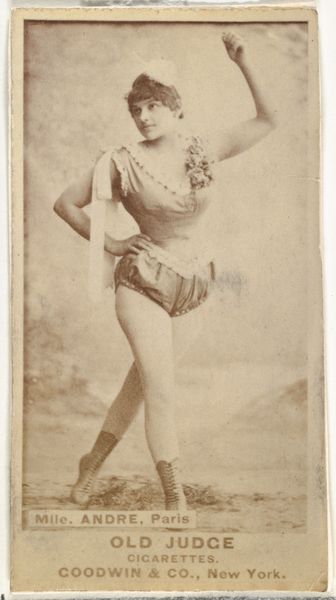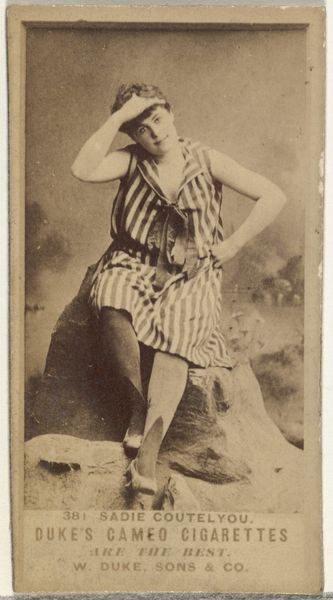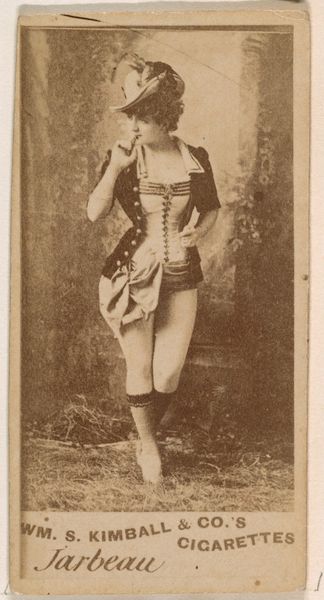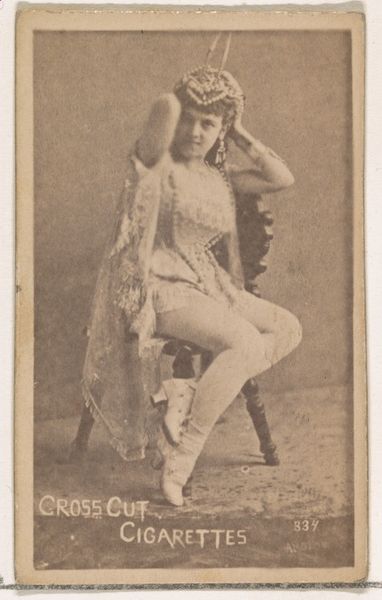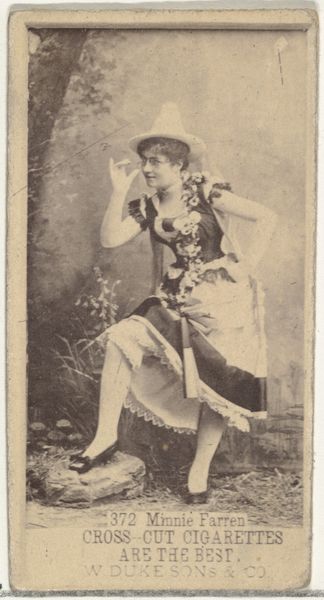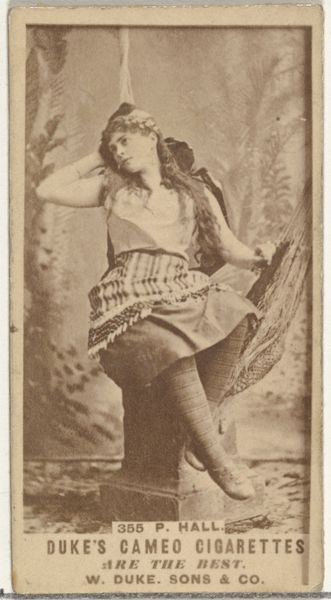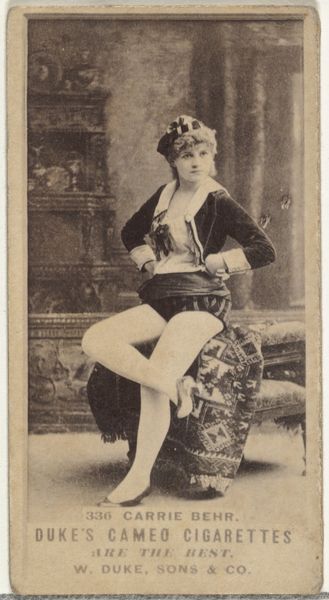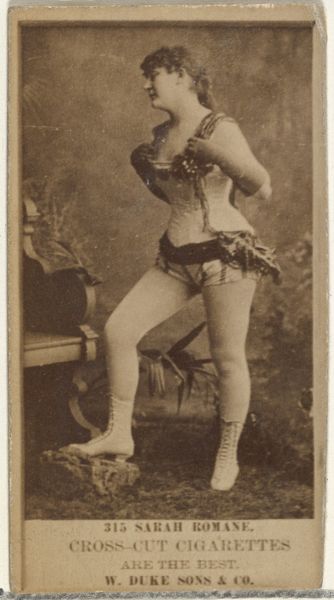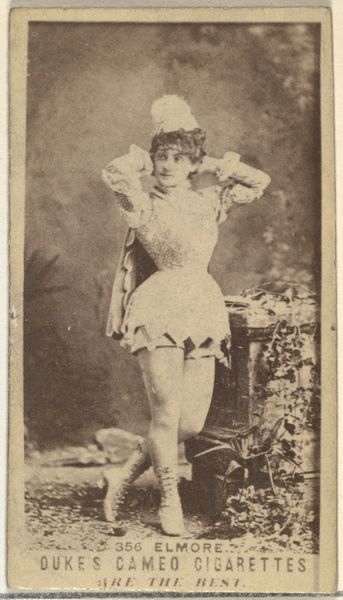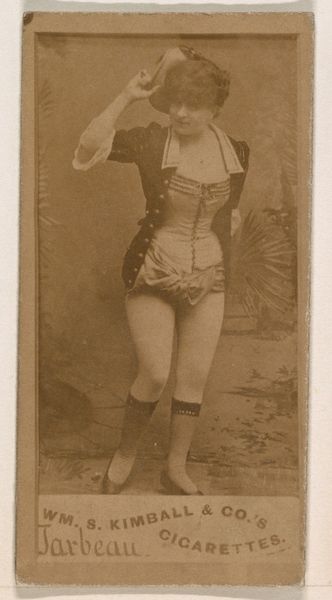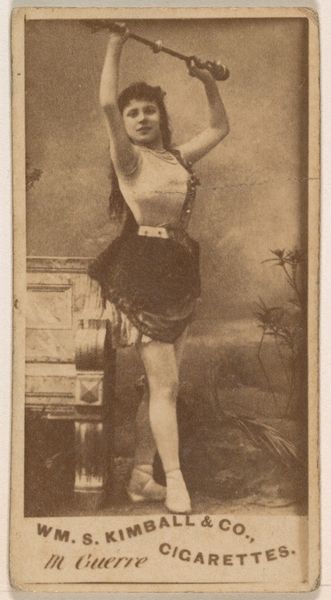
Estelle Rowe, from the Actresses series (N245) issued by Kinney Brothers to promote Sweet Caporal Cigarettes 1890
0:00
0:00
drawing, print, photography
#
portrait
#
drawing
#
toned paper
#
16_19th-century
#
photo restoration
# print
#
photography
#
19th century
#
men
Dimensions: Sheet: 2 1/2 × 1 7/16 in. (6.4 × 3.7 cm)
Copyright: Public Domain
Editor: Here we have "Estelle Rowe," a print from 1890 by Kinney Brothers, part of their Actresses series. It’s quite theatrical! I’m struck by the way she poses, and her gaze is fixed on something in the distance. What can you tell me about this piece? Curator: It’s fascinating to consider these actress cards as part of the late 19th-century’s burgeoning celebrity culture, fueled by mass media. These cards, inserted into cigarette packs, democratized portraiture. Who had access to see portraits, and what types of portraits were accessible, prior to mass-produced printed materials? Editor: That's a good point. Before photography became widely available, seeing someone's portrait would be a rare occurrence for most people, often limited to the wealthy or those of higher social status. Now you're saying things shifted with things like cigarette cards... Curator: Precisely! These cards functioned almost like proto-Instagram, popularizing actresses and shaping ideals of beauty. Also, consider that this image promoted Sweet Caporal Cigarettes. It’s no coincidence that they chose to feature actresses; associating their product with glamorous performers likely boosted sales. Can you see any politics of imagery at play? Editor: It seems like the marketing depended on promoting ideals and the lifestyles of famous actresses, in some ways not unlike today's celebrity endorsements. The tobacco company sought to create a desirable, enviable image around its product. I suppose those "ideals of beauty" would also reinforce existing social structures. Curator: Exactly. The photograph's display depended on how the manufacturers wanted women to be seen and to see themselves. Rowe's clothing also reinforces the ideal of her playing a male part to please an audience. Editor: So it reflects societal values of beauty, consumption, and performance all at once. Curator: Absolutely. It reveals a complex interplay of advertising, celebrity culture, and the construction of identity in the late 19th century. Editor: This was enlightening; now I see how interconnected marketing, social values, and access to images really are. Curator: Indeed. Examining the historical and cultural contexts behind seemingly simple images unveils the power dynamics shaping their production and consumption.
Comments
No comments
Be the first to comment and join the conversation on the ultimate creative platform.


